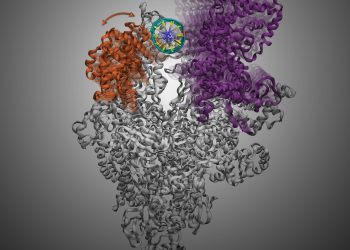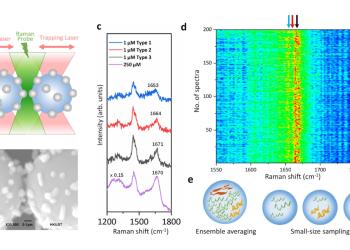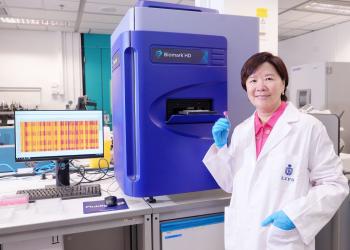新聞及香港科大故事
2021

新聞
科大研發寬禁帶半導體氮化鎵基互補型邏輯電路 拓寬氮化鎵電子學的疆界
香港科技大學(科大)電子與計算機工程學系陳敬教授帶領其團隊,爲方興未艾的氮化鎵(GaN)基電子學研究引入重要的新成員——互補型邏輯電路。相關技術的成功實現大幅拓展了相關研究領域的疆界,有望使氮化鎵基電子器件及相關集成電路的功能與性能得到進一步提升,從而更具競爭力。
氮化鎵基電子器件已歷逾25年的研發,近年來亦開啓了快速商業化的進程,並現身於如5G無線通信基站、移動設備的小型快速充電器、激光雷達等應用場景。在不久的將來,能夠提供極高效率與功率密度的基於氮化鎵的功率轉換、電源管理系統有望被應用於諸多湧現中的新型應用,如數據中心、無人駕駛、電動汽車、無人機、機器人等。所有這些應用既相當耗電,又需要供電模塊盡可能緊湊,這恰是氮化鎵基功率電子產品相對於傳統矽基半導體產品的優勢所在。爲了充分發掘氮化鎵的潛能,獲得更爲智能、穩定、可靠的電源系統,學界與業界在過去十餘年間一直在尋找、開發合適的技術平台以實現功率開關和各個外圍功能模塊的高度集成。其中,邏輯電路在爲外圍電路中廣泛存在,並扮演重要角色。
佔據當今半導體產業的統治地位矽基微電子與集成電路的經驗表明,互補型邏輯電路是製備大規模集成電路的最優拓撲。「互補(C)」,意味著電路由兩種具有相反控制邏輯的晶體管組成,一類擁有n型導電溝道,另一類則是p型溝道。因爲主流矽基互補型電路中的晶體管柵極爲金屬(M)-氧化物(O)-半導體(S)結構,所以更廣爲人知的名稱是「CMOS」。這樣的拓撲可以帶來諸多好處,其中最引人注目的是它極低的靜態功耗。因爲控制邏輯相反,所以在任何一個邏輯狀態下,總有一類器件處於關斷狀態,從而有效阻斷電流、顯著降低功耗。然而,由於高性能p溝道氮化鎵晶體管不易獲得,與n溝道器件的集成亦困難重重,基於氮化鎵的互補型邏輯電路的研發進展緩慢。

新聞
HKUST Scientists Discover How Antibiotics Target Bacterial RNAP to Inhibit Its Gene Transcription (只供英文版本)
A group of researchers at the Hong Kong University of Science and Technology (HKUST) has uncovered the mechanism of how DNA is being melted to start bacterial gene transcription and how one class of antibiotics inhibits this process – an important way in killing bacteria. This discovery provides useful insight on the development of new antibiotics for bacteria that is antimicrobial resistance.

新聞
HKUST Researchers Develop a Novel Raman Spectroscopy Platform to Characterize Intrinsically Disordered Proteins in Dilute Solution (只供英文版本)
It is challenging to analyze proteins at low concentrations, especially for those in a mixture of various conformations such as intrinsically disordered proteins (IDPs). A research team led by Prof. HUANG Jinqing, Assistant Professor of Department of Chemistry at The Hong Kong University of Science and Technology (HKUST), has developed optical tweezers-coupled Raman spectroscopy that can directly probe the structural features of alpha-synuclein, an IDP closely linked to Parkinson’s disease, at the physiological concentration by focusing on individual protein molecules.










